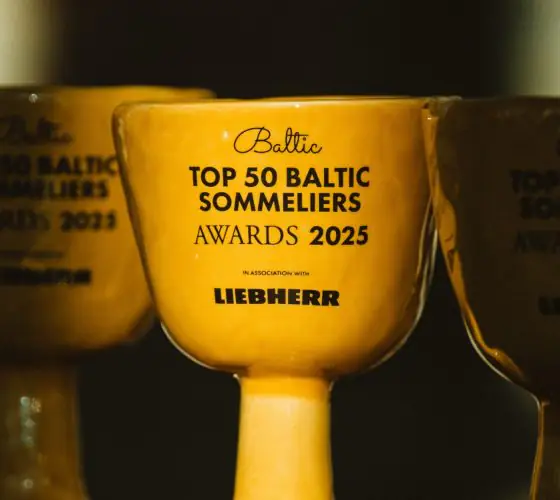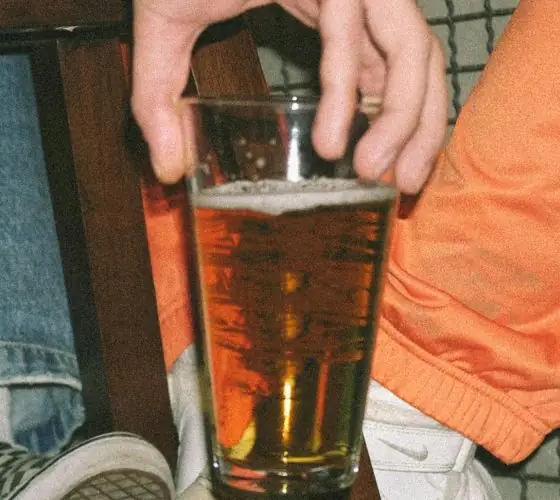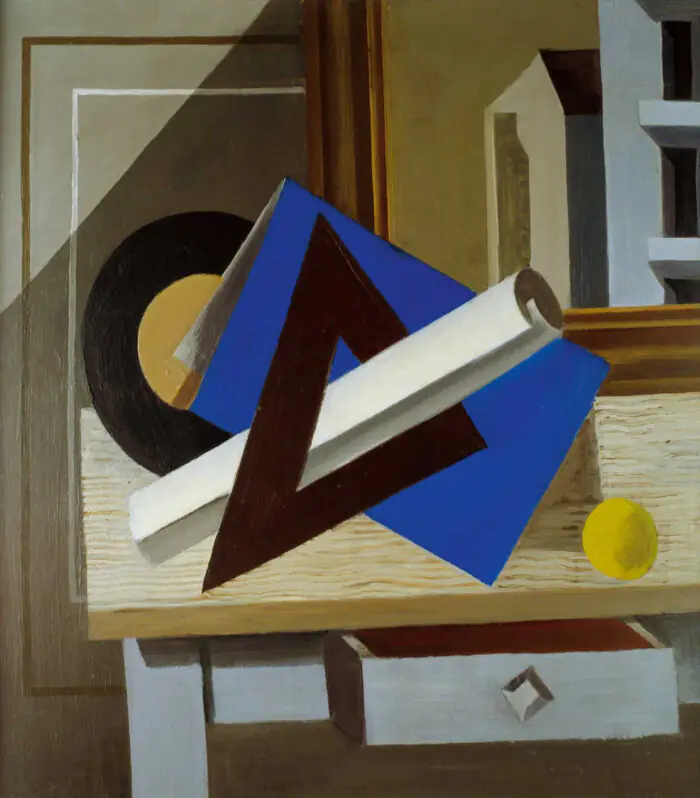
“Klusā daba ar trīsstūra lineālu”
1924
enciklopedija.lv

“Pašportrets ar pīpi”.
1919
enciklopedija.lv

“Divas sievietes pie galda”
1918
enciklopedija.lv
Roman Suta was born in 1896 in a wooden cart. It is said that this fact had an amazing effect on his future life and work: in many of his works horses appear, and the cart itself became a symbol of freedom, endless movement and inquisitive living mind of the artist.
Road to Art
Classic story: child takes a brush and colors– and paints a portrait so beautiful (although naive) that adults immediately sign him up for an art school – and after a few years he turns into a rising star on the art scene.
However, there was a time when Roman Suta was far from it.
At the age of 14 – in 1910 – after several years of studying at the Pskov School, the young Roman Suta and his brother went to Riga, where they got a job as ship’s boys. Their sea voyage lasted for about a year and, as is commonly believed, it was during this time when the future artist began raising interest in art.
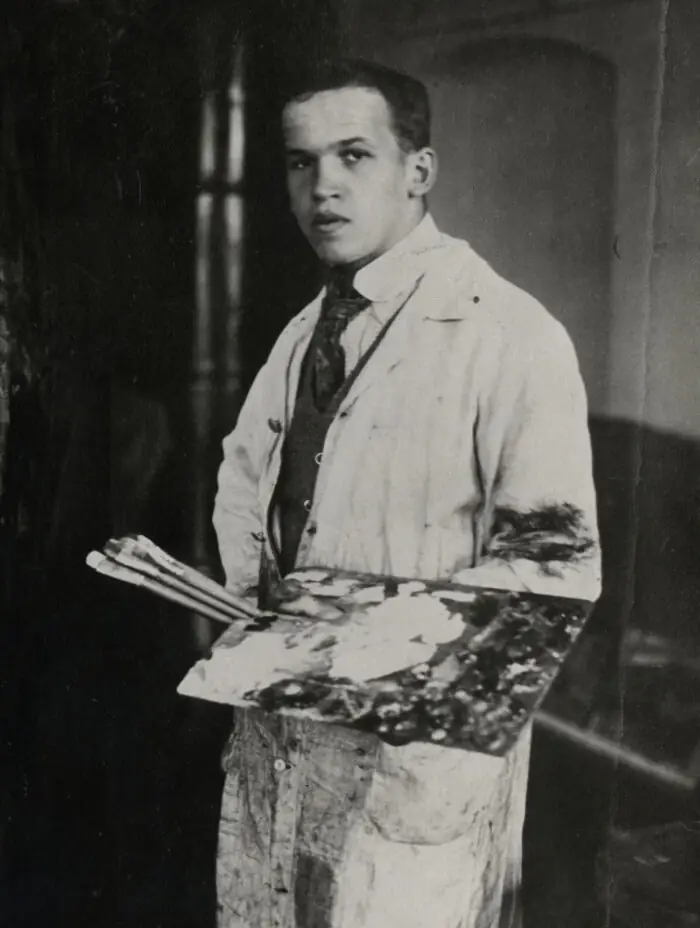
facebook.com/RSunABmuzejs
Returning to land, Suta entered the Riga City Art School, the director of which was then the legendary Wilhelm Purvitis.
And then the war began: 1915, the front line was nearing Riga. Suta and his family urgently left the country. Perhaps at this point his career as an artist would have ended without even beginning – but Purvitis intervened in the fate of Suta. He arranged his Riga wards in the Penza Art School.
It is here that Roman Suta began his creative career and met his future wife and like-minded artist Alexandra Beltsova.
Riga group of artists: the formation of Latvian modernism
In 1920, the Riga group of artists appeared in Riga, Roman Suta became an active member of it. The manifesto of the group: “to show in their works an exaggerated individuality and a personal spiritual essence, instead of objective nature.”
Thus, the Riga group of artists proclaimed modernism in Latvia.The group held meetings in the cafe “Sukub”, which was opened by the mother of Roman Suta (now the address would be Merķeļa street 21). The name for the cafe was invented by Suta himself: “su” – suprematism, “cube” – cubism. During this period, the artist actively worked in these areas (one of his most famous works is “Still Life with a Pipe”, 1923).

diena.lv
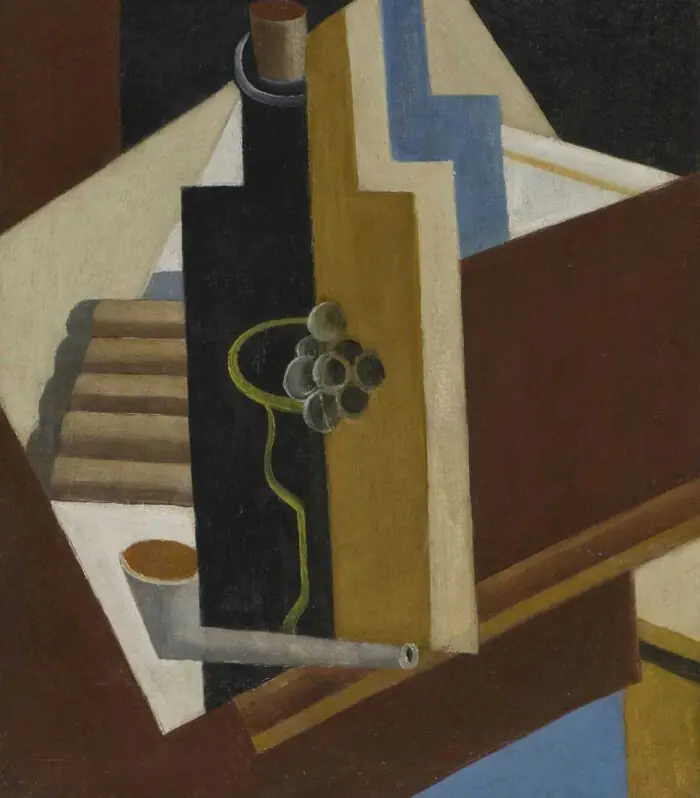
“Klusā daba ar pīpi”
1923
enciklopedija.lv
Baltars: Unification of Latvian Decorative and Applied Arts
Somewhat later, Roman Suta, his wife Alexandra Beltsova and the artist Sigismund Vidberg founded “Baltars”, a legendary porcelain painting workshop.
In fact, this workshop was an attempt to create a single style in Latvian decorative art by combining tradition and modernity.
Artists were engaged in painting vases, plates, cups, depicting scenes from the life of peasants, religious and exotic themes, plots from ancient Greek myths. At that time, dishes that were not intended for use in everyday life, caused questions and were not in demand – but today the surviving porcelain products of “Baltars” are included in the Latvian canon of culture.
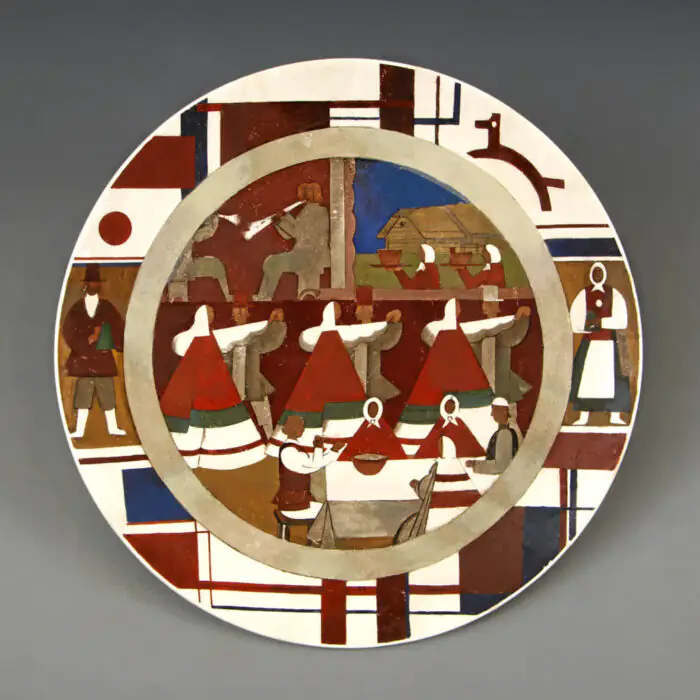
kulturaskanons.lv
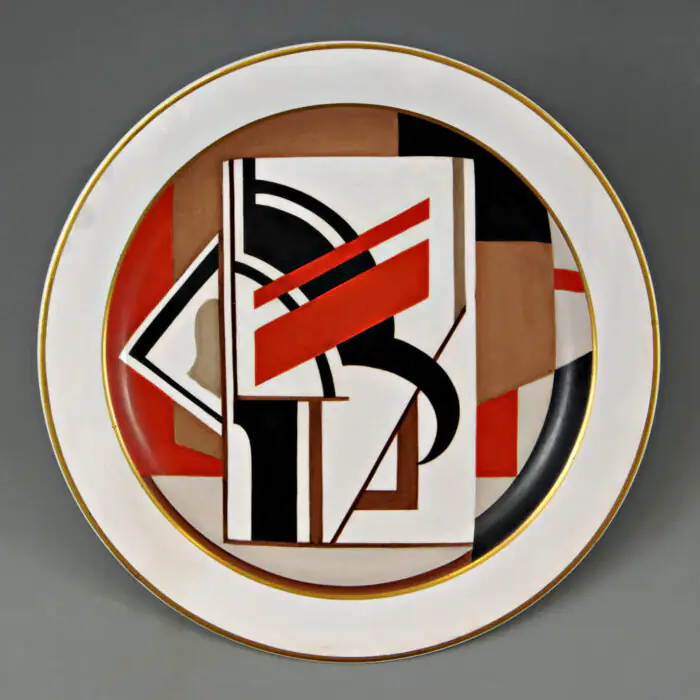
kulturaskanons.lv
And although the workshop itself wouldn’t last long, Suta remained in decorative and applied art for many years – for example, for a long time he held the position of chief artist at the famous Kuznetsov porcelain and faience factory. Now on the site of the factory there is a shopping center “Akropole”, inside which you can see a permanent exhibition with the products of the factory. In the center, of course, are the works by Roman Suta.
After leaving the position of chief artist in the factory, Suta engaged in teaching, became a member of the society of graphic art, and participated in the art association “Green Crow”. And he was also engaged in set design: he designed plays, ballets and even the film “Kauguriesi” of 1941.
Where to see Roman Suta’s work?
If in life Roman Suta was expressive, energetic and very noisy, in his work he demonstrated an absolute rationality and restraint. First – dozens of sketches, and only then – the final work.
Suta worked in styles from realism to purism, constantly exploring new facets in art.
Suta is said to have found a “universal formula for art.” What is it? You can find the answer to this question by getting acquainted with the works of the artist.
In Riga, a lot of Suta’s work is stored in the Latvian National Museum of Art, and also in the memorial apartment of Roman Suta and Alexandra Beltsova (this museum-apartment is located in the very center of Riga, on Elizabetes Street, on the site of the former apartment of artists). Thanks to her daughter, Tatiana Suta, the apartment now contains a vast collection of paintings, artistic porcelain, graphics, those numerous sketches, working tools and other things that belonged to artists: from interior items to clothes.
All the works of Roman Suta are certainly worthy of attention, but like any artist, he has his own trademarks. For example, the painting “The Church” , completed in 1917, definitely deserves attention. It is an early work and one of Suta’s first avant-garde paintings. It can be seen in the same memorial apartment.A “Self-portrait with a pipe” (1919), “Trench” (1920), “Still life with a triangle” (1924), “Still life with chess” (1927), and “After the masquerade” (1928) are stored in the Latvian National Museum of Art.
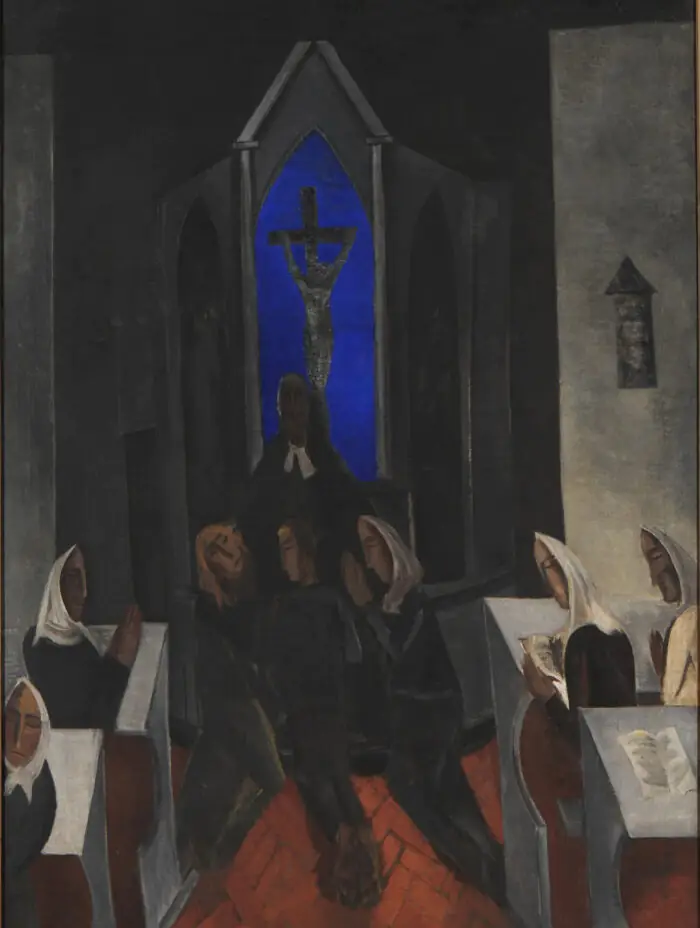
Baznīca
1917
artsandculture.google.com

“Klusā daba ar šahu”
1927
enciklopedija.lv

After Masquerade
1928
artsandculture.google.com


